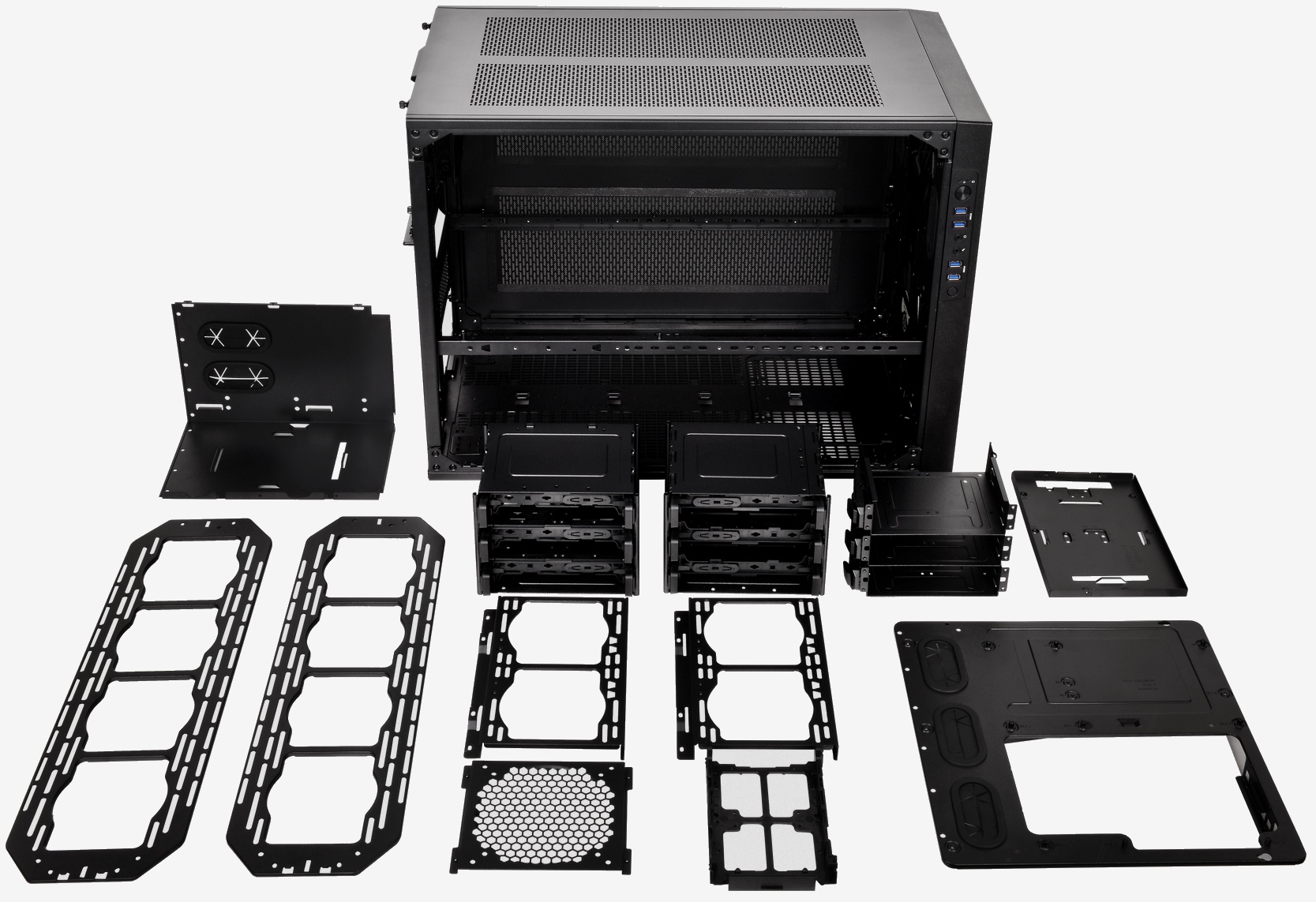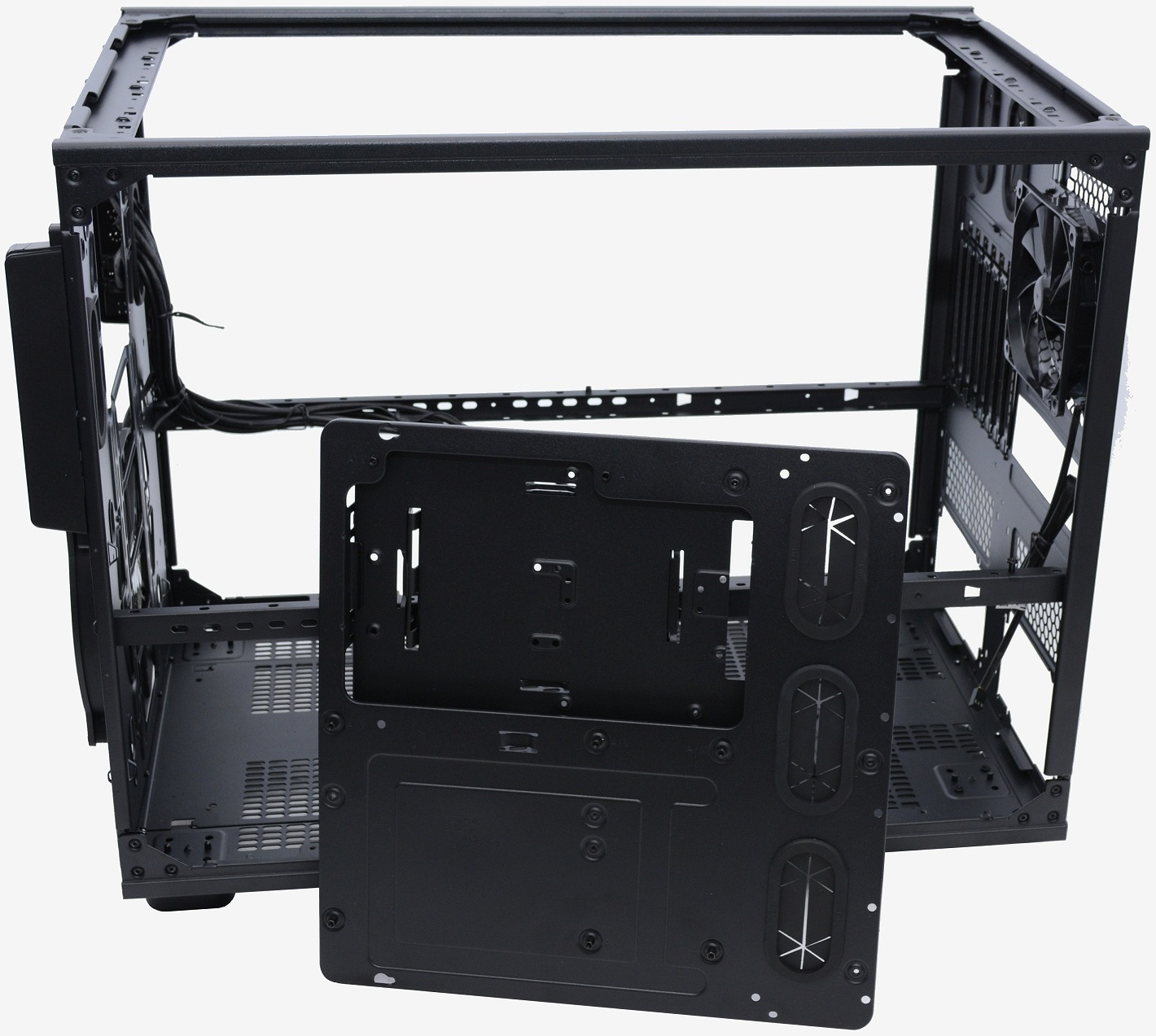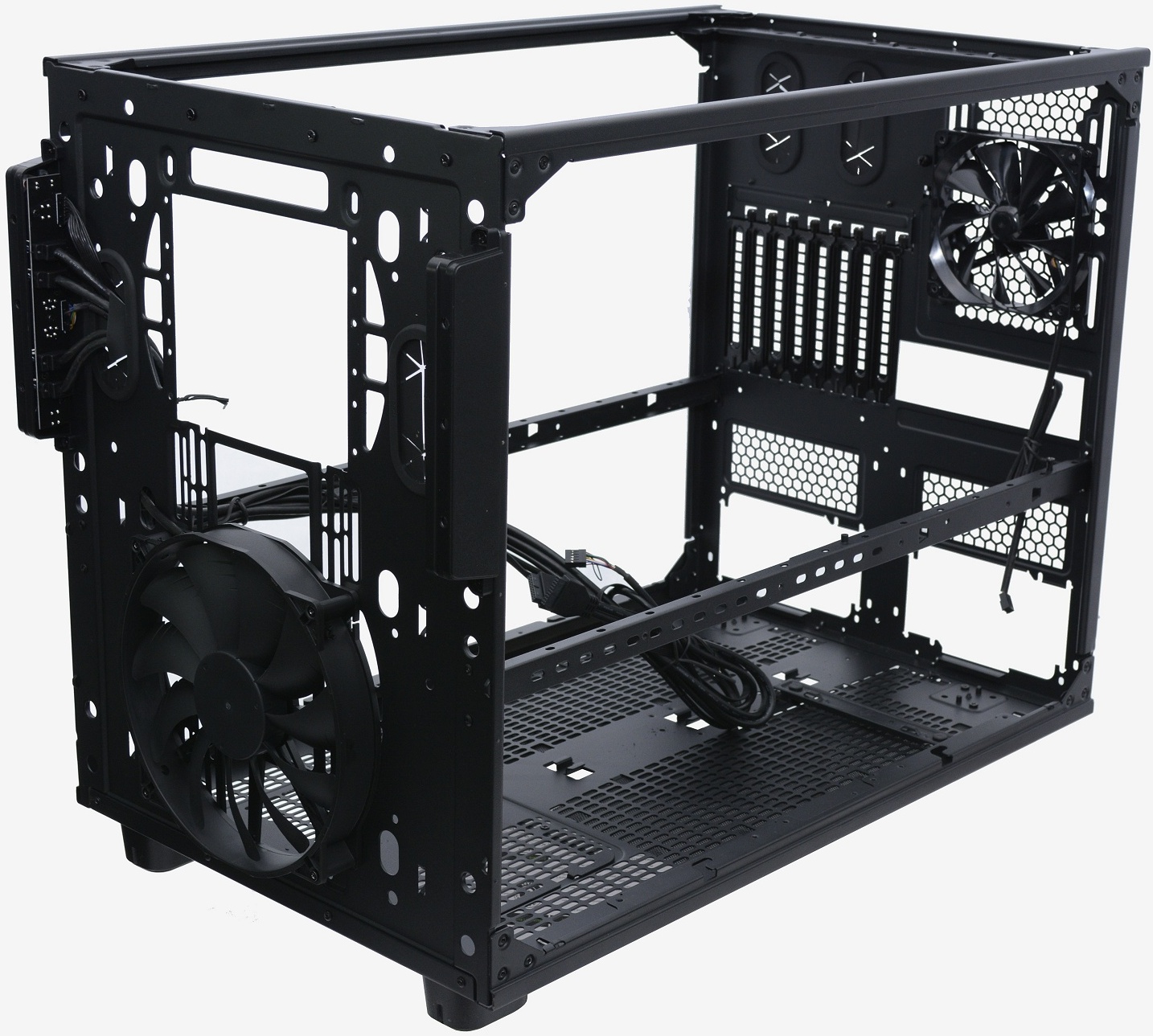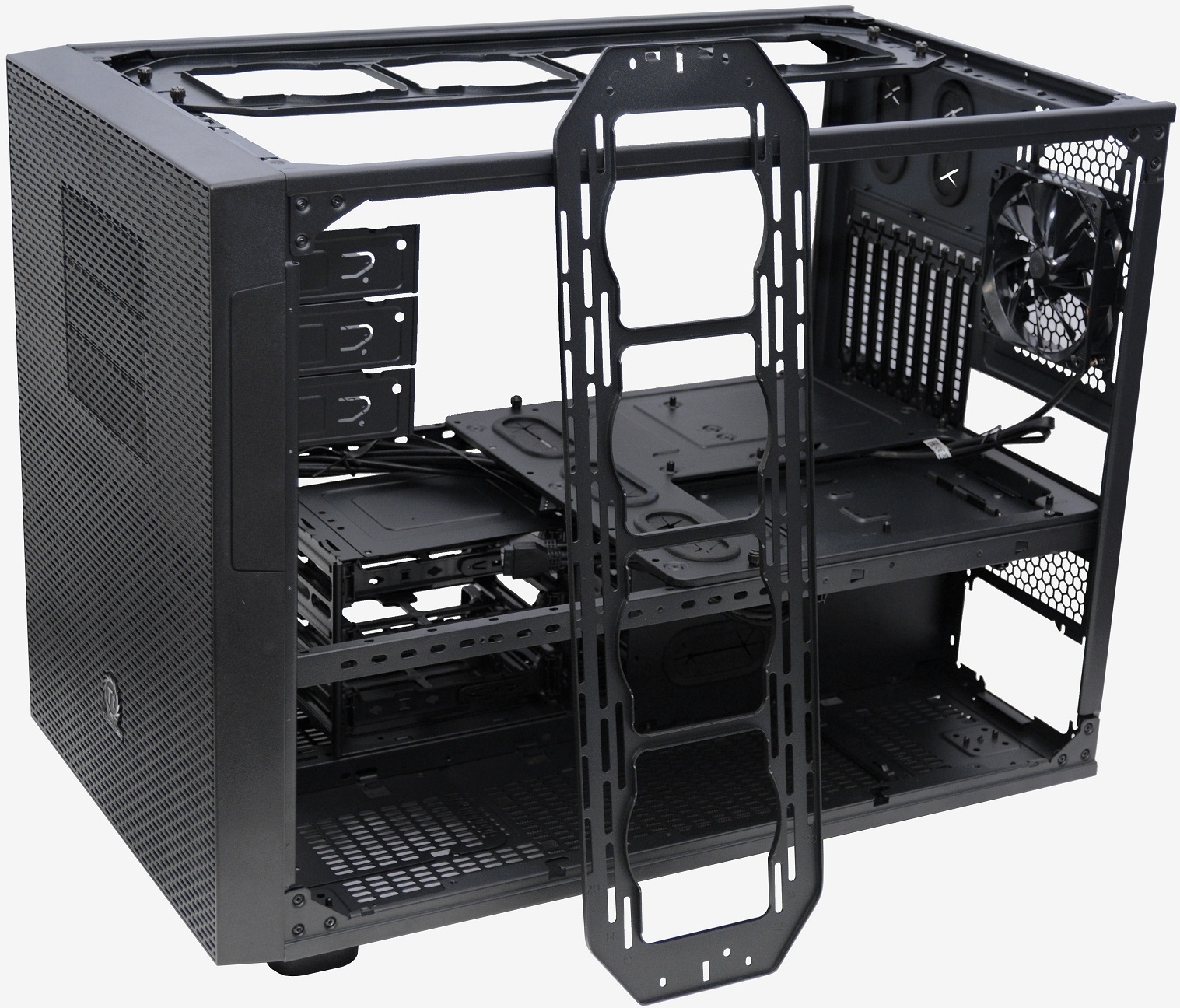Core X9 Internal Design
Opening up the Core X9 reveals a spacious interior. Split into two we have the vast expanse up top where the motherboard and expansion cards live, while down below we have a smaller section divided off with trays for the storage devices and room for a PSU or two.
From the left side there was six tool-less drive bays in the lower section of the case which are mounted longways rather than the more traditional sideways. The drives are well spaced which will help with cooling, though it isn't particularly useful if you want to build a file server, even with the stackable option.
My first main gripe so far with the Core X9 is that despite being one of the largest computer cases we've seen, hard drive support is limited to just eight drives out of the box. This is the same limitation faced by cases a quarter of the size and realistically there's room here to fit at least 36 3.5" hard drives with room left for a pair of 1000w power supplies without compromising cooling performance.
On top of the eight 3.5" drives the Core X9 also only supports a pair of 2.5" drives despite the fact that you could fit over 2500 2.5" drives inside the Core X9 if everything else was removed.
Thermaltake advertises the Core X9 as having a fully modular design and to an extent it does, certainly everything in the case can be taken out. However there doesn't appear to be any interchangeable parts, like you can't ditch the standard drive cages which make inefficient use of space for say a model that supports twice as many drives. Likewise you can't replace one of the six fan brackets with a bracket for mounting SSDs.
Moving up to the larger section of the Core X9's interior we find a removable motherboard tray that supports motherboards ranging from Mini-ITX to Extended ATX. The tray has a little more going on than usual and you will notice that while it does have a cut out behind the CPU socket, it is blocked.
To install a large third party CPU cooler that doesn't use Intel's mounting specification, you first need to remove the hard drive cage that supports a single 3.5" drive or two 2.5" drives. This is done easily enough via two thumbscrews, though we are surprised Thermaltake mounted this drive cage over the access hole and not on the opposite side of the tray.
The removable motherboard tray has nine standard ATX standoffs pre-installed and includes three large rectangular holes complete with rubber grommets for cable management.
The only other noteworthy feature up in this vast expanse of a case are three 5.25" drive slots which can be removed if you aren't going to use them. It's possible to stick another 200mm fan in the front of the case if you decide not to use the 5.25" bays and this is what we would opt for.
Speaking of fans, other than the single 200mm fan mounted in the front users will only find one more fan, a 120mm model acting as an exhaust fan in the rear.
However the Core X9 offers almost limitless options for extra fans, the front can house either two 200mm, two 140mm or three 120mm fans. The top will happily accept eight 120mm fans, six 140mm fans or two 200mm fans. The rear can handle two 120mm or 140mm fans while a further three 120mm can he installed in the rear. However, if you don't use the supplied adapters on rear fans, they can be used to house four 120mm or three 140mm fans in the left or right side panels.
As you might expect, the radiator support is just as crazy, allowing for one 360mm or smaller radiator in the front, two 480mm radiators in the top, a 140mm radiator in the rear, and a single 480mm in the bottom or side of the case.
In a case with a 120L capacity you might expect almost no hardware limitations and this is what you get with the Core X9. For example the CPU cooler height is virtually limitless at 250mm, VGA cards can stretch 400mm, or 590mm with the 5.25" bays removed, while the PSU can be up to 220mm long.







